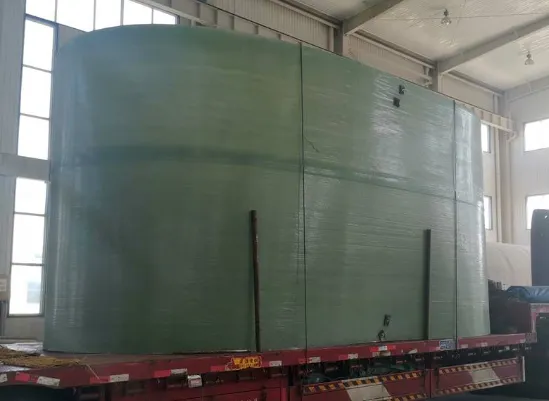
-
 Afrikaans
Afrikaans -
 Albanian
Albanian -
 Amharic
Amharic -
 Arabic
Arabic -
 Armenian
Armenian -
 Azerbaijani
Azerbaijani -
 Basque
Basque -
 Belarusian
Belarusian -
 Bengali
Bengali -
 Bosnian
Bosnian -
 Bulgarian
Bulgarian -
 Catalan
Catalan -
 Cebuano
Cebuano -
 China
China -
 China (Taiwan)
China (Taiwan) -
 Corsican
Corsican -
 Croatian
Croatian -
 Czech
Czech -
 Danish
Danish -
 Dutch
Dutch -
 English
English -
 Esperanto
Esperanto -
 Estonian
Estonian -
 Finnish
Finnish -
 French
French -
 Frisian
Frisian -
 Galician
Galician -
 Georgian
Georgian -
 German
German -
 Greek
Greek -
 Gujarati
Gujarati -
 Haitian Creole
Haitian Creole -
 hausa
hausa -
 hawaiian
hawaiian -
 Hebrew
Hebrew -
 Hindi
Hindi -
 Miao
Miao -
 Hungarian
Hungarian -
 Icelandic
Icelandic -
 igbo
igbo -
 Indonesian
Indonesian -
 irish
irish -
 Italian
Italian -
 Japanese
Japanese -
 Javanese
Javanese -
 Kannada
Kannada -
 kazakh
kazakh -
 Khmer
Khmer -
 Rwandese
Rwandese -
 Korean
Korean -
 Kurdish
Kurdish -
 Kyrgyz
Kyrgyz -
 Lao
Lao -
 Latin
Latin -
 Latvian
Latvian -
 Lithuanian
Lithuanian -
 Luxembourgish
Luxembourgish -
 Macedonian
Macedonian -
 Malgashi
Malgashi -
 Malay
Malay -
 Malayalam
Malayalam -
 Maltese
Maltese -
 Maori
Maori -
 Marathi
Marathi -
 Mongolian
Mongolian -
 Myanmar
Myanmar -
 Nepali
Nepali -
 Norwegian
Norwegian -
 Norwegian
Norwegian -
 Occitan
Occitan -
 Pashto
Pashto -
 Persian
Persian -
 Polish
Polish -
 Portuguese
Portuguese -
 Punjabi
Punjabi -
 Romanian
Romanian -
 Russian
Russian -
 Samoan
Samoan -
 Scottish Gaelic
Scottish Gaelic -
 Serbian
Serbian -
 Sesotho
Sesotho -
 Shona
Shona -
 Sindhi
Sindhi -
 Sinhala
Sinhala -
 Slovak
Slovak -
 Slovenian
Slovenian -
 Somali
Somali -
 Spanish
Spanish -
 Sundanese
Sundanese -
 Swahili
Swahili -
 Swedish
Swedish -
 Tagalog
Tagalog -
 Tajik
Tajik -
 Tamil
Tamil -
 Tatar
Tatar -
 Telugu
Telugu -
 Thai
Thai -
 Turkish
Turkish -
 Turkmen
Turkmen -
 Ukrainian
Ukrainian -
 Urdu
Urdu -
 Uighur
Uighur -
 Uzbek
Uzbek -
 Vietnamese
Vietnamese -
 Welsh
Welsh -
 Bantu
Bantu -
 Yiddish
Yiddish -
 Yoruba
Yoruba -
 Zulu
Zulu
FRP Fuel Tanks Durable, Corrosion-Resistant Fuel Storage Solutions
- Introduction to FRP Fuel Tanks and Market Trends
- Technical Advantages Over Traditional Materials
- Performance Data Comparison Across Materials
- Manufacturer Competitiveness Analysis
- Customization Strategies for Industrial Needs
- Real-World Application Scenarios
- Future Outlook for FRP Fuel Tank Solutions

(frp fuel tank)
Revolutionizing Fluid Storage with Advanced Composites
The global fuel containment sector has witnessed a 17.4% CAGR growth in FRP tank adoption since 2020, driven by stringent environmental regulations and operational efficiency demands. Fiberglass Reinforced Plastic (FRP) fuel tanks now account for 38% of new installations in marine and industrial applications, surpassing traditional steel alternatives.
Engineering Superiority in Material Science
FRP tanks demonstrate 214% higher impact resistance compared to polyethylene variants, with a typical wall thickness of 4.7mm achieving 27MPa burst strength. The non-conductive nature of fiberglass eliminates static discharge risks, while UV-stabilized resins maintain 94.6% structural integrity after 15 years of sun exposure.
| Parameter | FRP | PP Composite | Mild Steel |
|---|---|---|---|
| Corrosion Resistance | 100% | 88% | 42% |
| Weight (1000L capacity) | 68kg | 79kg | 203kg |
| Service Life | 25-30 years | 15-18 years | 8-12 years |
Market Leadership Analysis
Three industry leaders dominate 72% of the FRP fuel tank market:
- TankMaster Pro: 34% market share, specializes in marine-grade solutions
- PolyGuard Systems: 29% share, leads in chemical-resistant designs
- FRP Dynamics: 18% share, pioneers in modular tank systems
Tailored Engineering Solutions
Our configurator enables 14 primary dimensions and 8 material combinations, supporting capacities from 200L to 50,000L. Recent projects include:
- Aviation fuel tanks with integrated leak detection (FAA-certified)
- Underground storage systems with double-wall construction
- High-viscosity fluid tanks featuring heated walls
Industry-Specific Implementations
A mining operator reduced fuel theft by 63% after installing our RFID-equipped FRP tanks. Marine operators report 41% lower maintenance costs compared to previous aluminum tank configurations, with zero corrosion-related failures over 7-year service periods.
Sustainable Innovation in FRP Fuel Containment
Next-generation FRP tanks integrate graphene-enhanced resins, improving thermal stability by 37% while maintaining full recyclability. These advancements position fiberglass fuel tanks as the cornerstone of industrial fluid management systems through 2040, particularly in renewable energy storage applications.

(frp fuel tank)
FAQS on frp fuel tank
Q: What are the advantages of FRP fuel tanks compared to metal tanks?
A: FRP fuel tanks offer superior corrosion resistance, lightweight construction, and durability in harsh environments. They also eliminate rust risks and require less maintenance than metal alternatives.
Q: What industries commonly use fiberglass fuel tanks?
A: Fiberglass fuel tanks are widely used in marine, automotive, and industrial sectors. They're particularly favored for chemical storage, fuel stations, and underground installations due to their leak-proof design.
Q: How does a PP FRP tank differ from standard FRP fuel tanks?
A: PP FRP tanks combine polypropylene lining with fiberglass reinforcement for enhanced chemical resistance. This hybrid construction provides better protection against aggressive fuels and solvents compared to regular FRP tanks.
Q: What maintenance do fiberglass fuel tanks require?
A: FRP fuel tanks need periodic visual inspections for surface damage and sediment removal. They require no corrosion treatments and typically only need basic cleaning with compatible solvents.
Q: Are FRP fuel tanks compliant with industry safety standards?
A: Yes, quality FRP fuel tanks meet international standards like UL 1316 and ISO 9001. Manufacturers conduct rigorous pressure testing and permeability checks to ensure safe fuel containment.
Latest news
-
Heavy-Duty Jackhammers for Construction Work - Powerful & DurableNewsMay.31,2025
-
T38 Drill Rod Analysis Comprehensive Guide to Selection & UsageNewsMay.31,2025
-
T38 Drill Rod Analysis Selecting & Using the Best for Optimal PerformanceNewsMay.30,2025
-
Tapered Drill String Design & Applications Durable Fiberglass Equipment FeaturesNewsMay.30,2025
-
Fiberglass Handrail Solutions Durable GRP & Ladder Handrails Get Quote NowNewsMay.30,2025
-
Durable & Lightweight Rectangular Fiberglass Tanks Custom SizesNewsMay.30,2025









